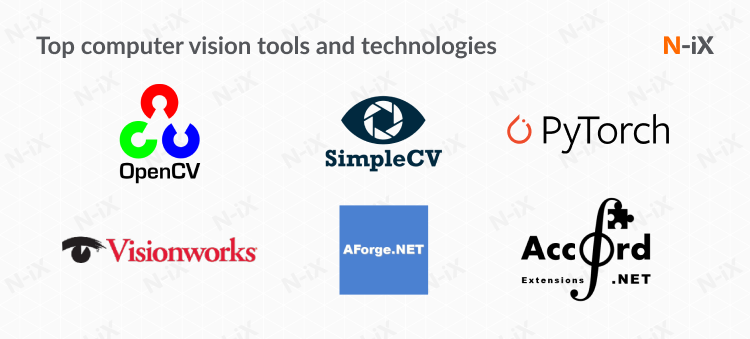Computer vision is becoming an increasingly popular and widely-used subset of AI and Machine Learning. Indeed, the Asia Pacific market that was evaluated at $11.22B in 2021 is expected to have an annual growth rate of 7% between 2022 and 2030. The interest in computer vision stems from its capability to automate and streamline operations that are usually performed manually. CV allows businesses to improve their time efficiency, cut costs, and reduce the number of errors, especially in menial repeatable tasks.

However, computer vision projects tend to be quite complex, requiring significant technical prowess to succeed. It is unsurprising then that there is a significant increase in demand for experienced CV experts. We have outlined 3 key steps that will provide insight into how to find the right experts and how to hire a computer vision engineer. Let’s begin.
1. Assessing the practical computer vision development experience
The first thing to know about how to hire a computer vision engineer, is the importance of some practical experience that a computer vision engineer must have. Have they developed CV solutions for their clients before? Which industries do their clients operate in? And how have these clients benefited from their cooperation?
A vendor that can provide experienced developers can answer all these questions by demonstrating success stories that provide a more detailed look into their previous or ongoing partnerships. A typical success story will outline the client’s challenge, the solution the vendor implemented, and the benefits that the client gained. Let’s look at one of N-iX’s success stories as an example.
Success story: enhancing warehouse logistics with computer vision
Our client is a Fortune 100 engineering and technology company based in Germany. The organization uses a network of 400+ warehouses to operate in over 60 countries worldwide.
The challenge: inefficient warehouse operations hindered by manual work
One of the most significant challenges that our client faced was a high amount of manual work that was involved in warehouse operations related to receiving and processing packages. The process incurred significant time and costs and led to frequent human errors.
N-iX solution: driving automation with computer vision
Our team has developed a computer vision solution that works in conjunction with industrial optic sensors and Nvidia Jetson devices that are installed in warehouses. The solution uses advanced CV algorithms and an automated ML system to train, deploy, and test ML models that automatically detect arriving packages, scan barcodes and assign delivery statuses.
Furthermore, our computer vision experts have also built a mobile application powered by CV, Natural Language Processing (NLP), and Optical Character Recognition (OCR). This application helps warehouse workers detect and identify package damages, as well as streamline related document processing.
Value delivered: enhancing productivity and business efficiency
The Fortune 100 company has gained multiple substantial benefits from their cooperation with N-iX, namely:
- Faster and more efficient warehouse operations achieved by automating manual work and reducing the amount of paper documentation;
- Reduced expenses incurred by defective packages with effective package damage detection;
- Effective inventory management of over 400 warehouses located in different countries around the world;
- More effective planning that reduced warehouse downtime and operational overhead.
In addition to computer vision, our cooperation with the client encompassed many aspects of digital transformation. Head over to this page if you are interested to learn more.
2. Analyzing the expertise and ability to apply computer vision in various industries
Good computer vision engineers are not one-trick ponies. They should have broad expertise and be familiar with industries that are most commonly associated with CV. Let’s take a brief look at what these industries are, and what computer engineers should be able to do for each.
Manufacturing
Manufacturing has the potential to be one of the industries that benefit from CV the most. A solution developed by a computer vision engineer helps manufacturing companies automate processes, streamline operations, and boost productivity in a variety of ways. These are:
- Incorporating vision-guided robots. CV-powered robots can quickly and accurately position items on the production line, boosting production speed and accuracy.
- Scanning barcodes and text labels. Since manual label scanning requires a lot of time and effort from employees, computer vision can be the missing link in the efforts to automate and optimize warehouse operations.
- Inspecting packages. Computer vision helps companies maintain the quality level of their products and ensure that items meet the required packaging standards, such as color or size.
- Reducing defects. CV solutions can monitor the production line to ensure that every manufactured item meets the acceptance criteria, and they can do it much faster and more accurately than regular employees.
- Detecting anomalies. In addition to monitoring items that are being manufactured, CV engineers can also help monitor the manufacturing lines themselves, ensuring that no abnormalities or dangerous situations occur during the production process.
- Tracing, tracking, and labeling. Computer vision solutions can help prevent mislabeling and misplacing products, which can be quite costly.
Healthcare
CV can do wonders for patient treatment as its effectiveness and speed of analyzing medical data is often superior to even the most experienced doctors. The most common applications include:
- CT scan and MRI analysis. CV solutions can improve patient outcomes by accurately analyzing radiology images and enhancing MRI image resolutions with deep learning algorithms.
- X-Ray image analysis. CV helps ensure effective surgery planning, MRI reconstruction, and faster and more effective x-ray image analysis as compared to manual.
- Cancer detection. Doctors can use computer vision to compare cells on images to detect anomalies and ensure faster diagnosis.
- Movement analysis. By using CV to analyze movement, doctors can effectively diagnose musculoskeletal and neurological diseases in patients, as well as disorders in neurological development in infants.
- Digital pathology. A CV application can identify pathologies by analyzing images obtained from whole-slide imaging scanners.
Agriculture
The knowledge of how to hire computer vision engineers can significantly boost the production capabilities of companies that operate in agriculture. They can develop sophisticated CV solutions that allow to:
- Monitor crop growth and predict yield in real-time;
- Perform automatic weeding;
- Detect, classify, and count insects that threaten the crops;
- Count livestock and detect abnormal behavior or disease;
- Utilize image data to detect and monitor plant disease;
- Monitor crops and livestock remotely by analyzing aerial imagery captured by drones;
- Establish adequate irrigation with soil composition monitoring.
Transportation
Computer vision plays an important role in the transformation of the modern transportation industry by helping to make roads safer for both drivers and pedestrians. It is essential for:
- Building self-driving cars;
- Detecting pedestrians;
- Detecting occupied parking spaces;
- Analyzing traffic flows;
- Monitoring road conditions.
Read more about N-iX’s experience with computer vision in transportation.
Retail
Finally, CV plays a big part in helping the retail industry streamline its operations and enhance customer experience. The main applications include:
- Enabling self-checkout;
- Enhancing inventory management by monitoring shelves and notifying about stock-outs;
- Improving store layouts with heat maps and A/B tests;
- Managing staff changes with crowd counting and queue monitoring;
- Improving security with intelligent video analytics.
3. Assessing the knowledge of CV tools and technologies
The final step of how to hire a computer vision engineer is the assessment of their skillset. Solid knowledge of the essential tools and technologies is the bread and butter of any software engineer, including those who specialize in CV. Whether you are building a sophisticated computer vision solution for retail, healthcare, or manufacturing, you need to know how to hire computer vision engineers who can confidently apply CV technologies in the right business context. These include:
- AForge.NET/Accord.NET and Computer Vision Sandbox. This set of .NET tools has access to various CV instruments, libraries, and advanced analysis algorithms. An experienced computer vision engineer can use them to implement many CV capabilities, such as barcode scanning, image and video processing, vision-based automation, and more.
- SimpleCV. In addition to offering quick prototyping, this framework also has excellent interoperability with various tools, which makes it a solid choice for building CV applications. However, it suffers from a somewhat limited performance in high-load environments. Additionally, because of a rather small community, SimpleCV can be quite lacking in the documentation and support departments.
- OpenCV. Probably, one of the most widely-used CV tools with lots of applications, from image processing and interpretation to object movement analysis, camera calibration, and optical distortion removal. Even though the tool is written using C++, it has other language bindings as well, such as Java, JavaScript, and Python. Moreover, OpenCV has access to various useful features like object segmentation, 3D reconstruction, etc.
- PyTorch. This open-source ML library has both Python and C++ interfaces and is widely used for building computer vision and natural language processing (NLP) solutions.
- VisionWorks. This is a tool from Nvidia that enables the implementation of various applications, such as intelligent video analytics or localization algorithms, by building CV pipelines. It also simplifies the tracking and analysis of multiple scenes with the use of a thread-safe API.
- Vision Workbench. NASA built this library mostly on C++ to use in applied research on computer vision. However, it can also be used for robotics, image enhancements and analysis, and more.

A good computer vision engineer does not limit themselves only to tools that are used specifically for CV. There are many handy technologies and platforms with a wide range of applications that can be very useful in building computer vision solutions. These include:
- CUDA–a useful tool for accelerating CV algorithms that allows executing processes using GPU instead of CPU and enables image, video, and signal processing;
- FastAI–a library for PyTorch with a focus on deep learning that allows training of quick and accurate neural networks;
- H2O.ai–an open-source Machine Learning platform with AutoML functionality and linear scalability that supports statistical and ML algorithms;
- Keras–an open-source library that expands the capabilities of working with deep neural networks;
- Kubeflow–an open-source ML platform that enables the smooth running of ML workflows on Kubernetes;
- Nvidia Data Loading Library (DALI)–an open-source library for deep learning applications that enhances image, video, and speech augmentation and decoding;
- Matlab–a neat instrument that allows building image processing solutions that are easy to read, debug, and support;
- Microsoft Cognitive Toolkit–an open-source deep learning toolkit that supports the Open Neural Network Enhance format (ONNX);
- OpenVINO–a collection of pre-trained models written in C++ and Python that can be quickly deployed and optimized;
- TensorFlow–a powerful and easy-to-use tool for image processing and classification, as well as utilizing deep learning in CV. It also enables face and expression recognition when combined with a Python API.

Finally, there are also some computer vision as a service solutions that any experienced computer vision engineer should be familiar with:
- Amazon Rekognition uses deep learning techniques to identify people, activities, text, and objects to enable image and video analytics;
- Google AI Platform and Firebase ML Kit identify handwritten and printed text, recognize objects and faces, create image catalogs with valuable metadata, and utilize AutoML to streamline and optimize ML models;
- Microsoft Azure Computer Vision API can process and classify images, text, and video in near real-time, as well as recognize handwriting, generate image thumbnails, flag sensitive or adult content, etc.
Proficiency in most commonly used CV technologies and familiarity with at least some additional tools and computer vision as a service solutions signify a well-rounded computer vision engineer who most likely will be able to successfully implement your project.
Boost your business efficiency with N-iX computer vision engineers
- N-iX has deep expertise in AI and ML, DevOps, and QA, as well as technologies and programming languages that are used in computer vision, such as Java, Python, and C++;
- We have experience working with leading global enterprises from manufacturing, healthcare, eCommerce, and other industries;
- N-iX has over 23 years of experience in delivering high-quality tech services, including CV, and is aware of how to hire a computer vision engineer;
- N-iX has over 2,400 experts on staff, which allows us to quickly form development teams to suit any need.




